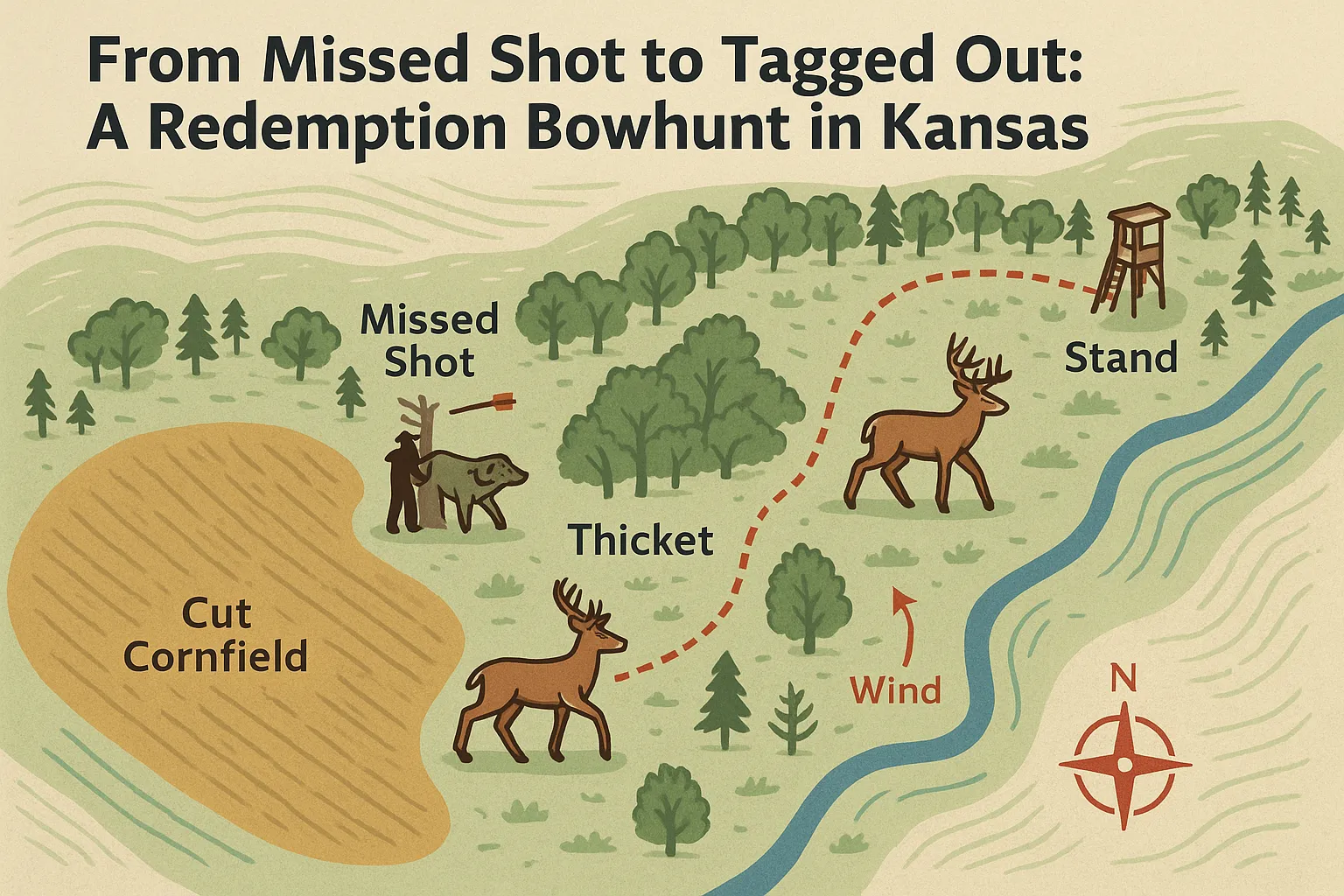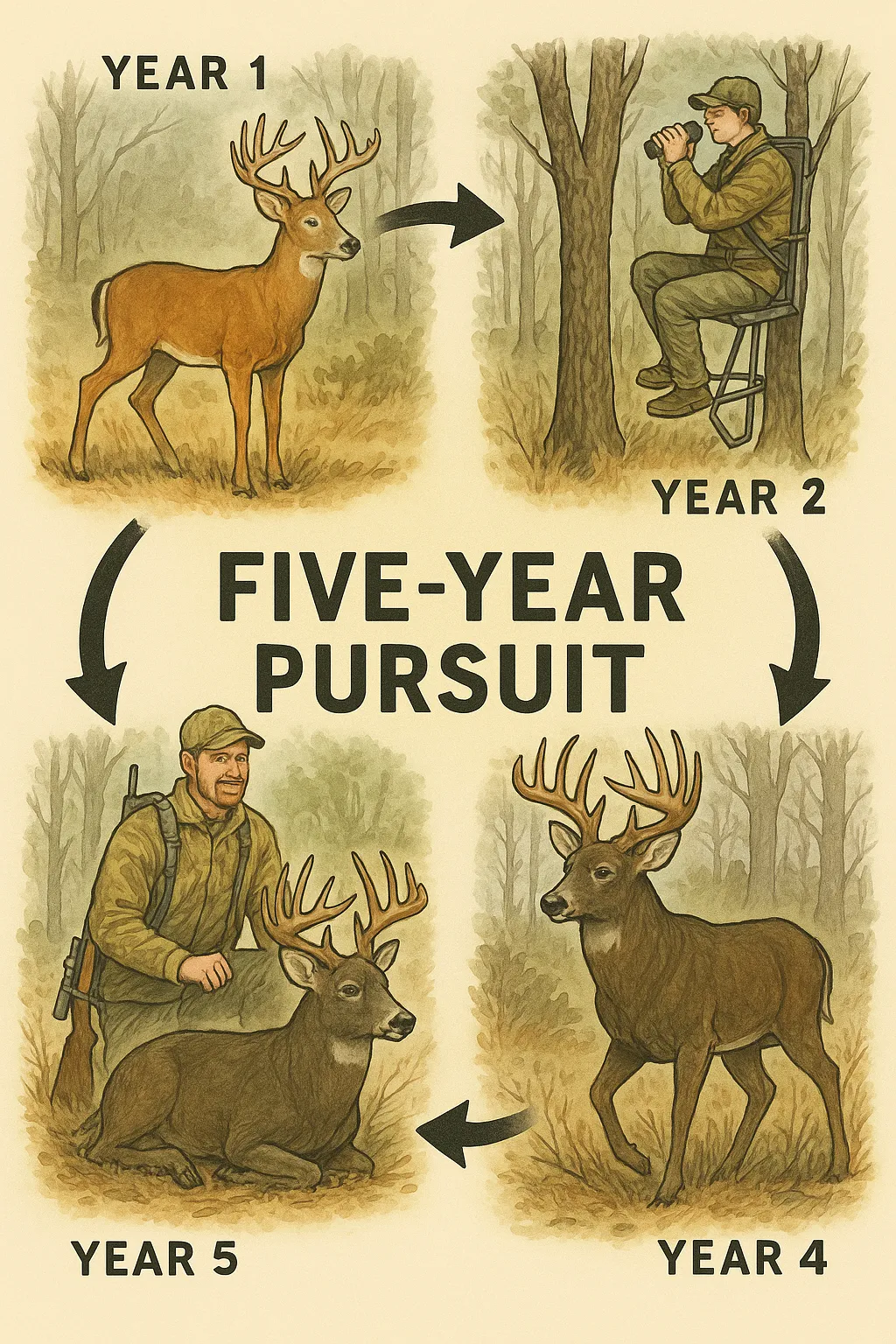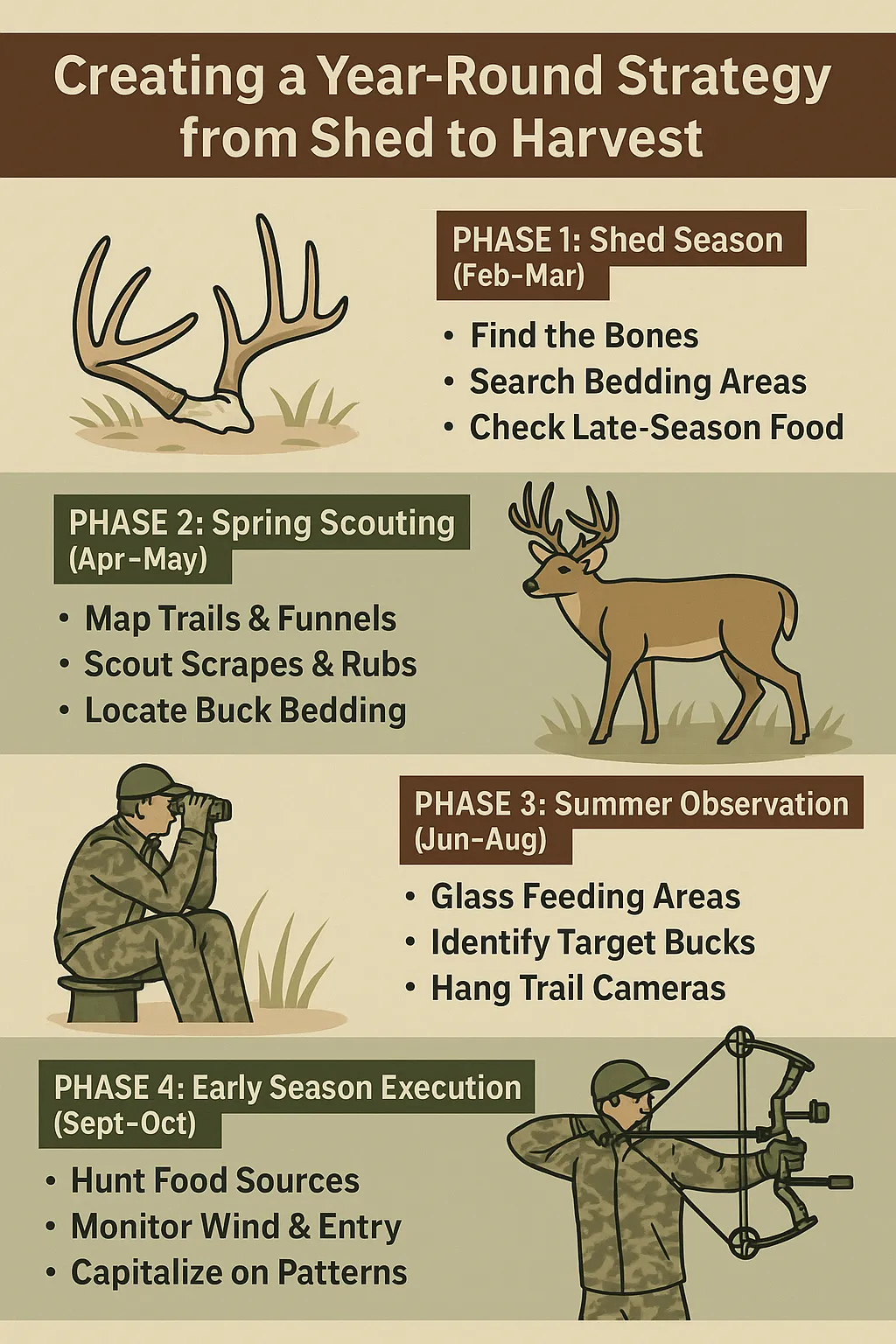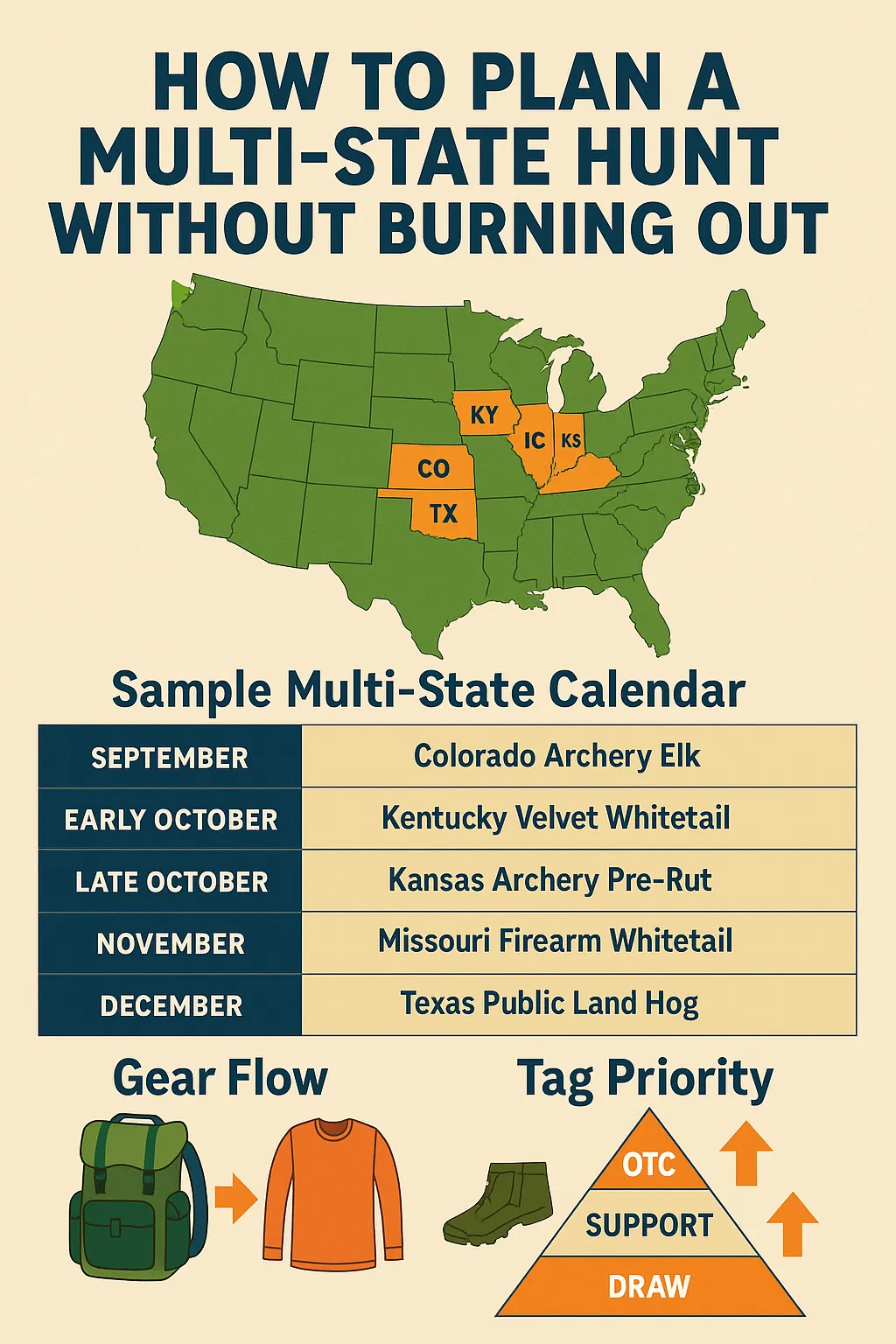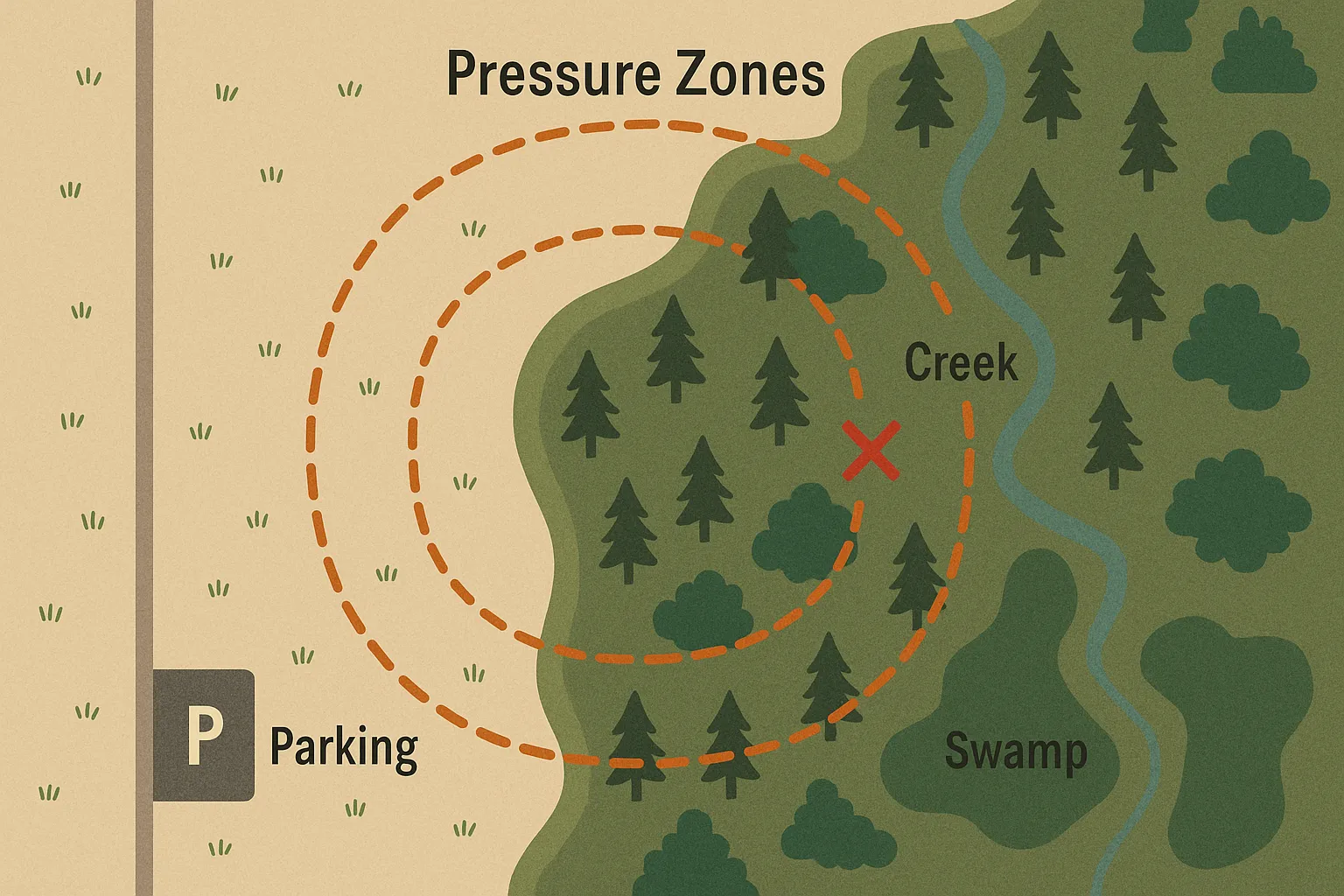
Hunting Pressure Zones: How to Beat the Crowds
On public land, the game isn’t just finding animals—it’s finding animals where other hunters aren’t. The best sign in the world means nothing if 10 other boots cross the same trailhead before sunrise. Beating pressure isn’t about luck. It’s about understanding how hunters move, where they focus, and how animals respond.
Here’s how to identify pressure zones, adapt your tactics, and consistently tag game on ground you share with dozens of others.
🧠 What Is a Pressure Zone?
A pressure zone is any area where hunting activity becomes dense enough to change animal behavior. On pressured public land, this means:
-
Deer go nocturnal or shift core areas
-
Elk avoid bugling and stay in cover longer
-
Waterfowl flare early or move to refuge zones
-
Predators travel deeper into inaccessible cover
🎯 Key Signs of Pressure:
-
Multiple trucks at parking lots or trailheads
-
Fresh boot tracks, ATV trails, or bait piles
-
Empty fields near roads despite good feed
-
Worn-in stand locations or visible ground blinds
🎙️ “If I can walk a straight line from a parking lot and hit a tree stand within 500 yards—I keep walking.”
— Logan P., Pennsylvania
🗺️ How to Identify and Map Pressure Zones
📍 Start with Digital Scouting:
| Layer to Check | What It Tells You |
|---|---|
| Access points & parking | Where hunters are likely entering |
| Terrain features | Most hunters avoid steep or wet areas |
| Aerial vegetation | Open areas are popular, dense cover is avoided |
| Distance from roads | The further you go, the fewer hunters you see |
🛠️ Tools: OnX Hunt, BaseMap, HuntStand Pro with pressure heatmaps or trailhead overlays.
🎯 Pro Tip: Draw a 500-yard buffer around all public access points. Then plan to hunt outside or perpendicular to those rings.
👣 How to Beat Pressure by Going Where Others Won’t
1. Go Deep, Go Steep, or Go Wet
Animals quickly recognize safety zones. These include:
-
Steep ridge faces
-
Swamp edges and flooded creek bottoms
-
Thick, thorny bedding cover
-
Crosswind saddles that are hard to access
🎙️ “I hunt a brushy ditch line 300 yards past where the orange army stops. It’s not pretty—but it’s productive.”
— Cassie J., Indiana
2. Hunt Off-Wind or Cross-Wind
Most hunters set up with a perfect wind for themselves—not the animal.
📌 Instead:
-
Use a quartering wind that favors movement not comfort
-
Hunt just off wind from the obvious setup
-
Let other hunters push deer or elk toward your offset zone
🎯 Ideal Setup: Ridge saddles with 45° crosswind on leeward slope
3. Midday & Midweek Advantage
📅 Change your timing:
-
Avoid Saturdays/Sundays in high-access zones
-
Hunt Tuesdays through Thursdays or holidays others skip
-
Sit long into midday—mature bucks often move 10AM–2PM post-pressure
🎙️ “I kill more deer on Wednesdays than Saturdays. It’s the only day I don’t see another headlamp.”
— Brian K., Kentucky
4. Mobile = Deadly in Pressure Zones
📦 Why Mobile Hunting Works:
-
You can adapt to sign and movement
-
You won’t burn a stand location with repeated sits
-
Saddles, climbers, and small pop-up blinds are quick, quiet, and light
🛠️ Go-To Mobile Gear:
| Item | Why It Helps Beat Pressure |
|---|---|
| Tree saddle setup | Set up anywhere, blend in tight timber |
| Ultra-light climber | Speed + adjustability on the fly |
| Ground blind + ghillie | Works in swamp, CRP, or ag edge locations |
🦌 How Animals React to Pressure—And What to Do
| Species | Reaction to Pressure | Tactic to Counter |
|---|---|---|
| Whitetail | Go nocturnal, shift to thicker beds | Hunt inside corners, off-wind transitions |
| Elk | Stop bugling, move elevation zones | Silent stalking, glassing midday |
| Mule Deer | Bed early, shift to shadows | Glass cuts, hunt benches near cover |
| Hogs | Move to nocturnal pattern or wallows | Sit tight on shade or water mid-morning |
| Ducks | Shift to mid-morning loaf spots | Hunt backwater, creek sloughs, or field edges |
🎙️ “The big bucks show up after the pressure, not during. If you stay quiet and still—your window will come.”
— Eli S., Minnesota
🔄 Pressure Hacking Strategy: Use Others to Your Advantage
-
Let other hunters push game toward less pressured zones
-
Hunt escape trails that funnel out of bedding
-
When everyone moves in at daylight—you hang back and hunt transition zones
-
Shift 500–700 yards away from concentrated blinds or ladder stands
🎙️ “That 9-pointer didn’t walk past me by mistake—he was leaving someone else’s ladder stand after getting winded.”
— Blake R., Mississippi
📣 Tools to Beat Hunting Pressure in 2025
-
OnX Elite Membership – Use “Recent Satellite” and “Public Access” overlays
-
BaseMap Pro – Tracks boot paths and shows unmarked parcels
-
Windy App – Micro-wind forecasting to avoid scent overlap
-
Spartan Forge – Pressure-adaptive whitetail movement forecasts
💡 Pro Tip: Pressure doesn’t ruin the hunt—it just reshapes it. The hunters who read it like a map will always find the animals.
🌟 Final Shot: Pressure Is a Clue, Not a Curse
Most hunters avoid pressure. Smart hunters use it. When you learn to read hunter movement, anticipate how animals adapt, and adjust your setup strategy accordingly, pressure becomes your greatest scouting asset—not your greatest obstacle.
“Let the crowds come. You just need to know how to hunt around them.”
Leave A Comment
Related Posts
Creating a Year-Round Strategy from Shed to Harvest Tagging a […]
Over-the-Counter Tags vs. Preference Points: What’s Worth It in 2025? […]
How to Plan a Multi-State Hunt Without Burning Out Hunting […]

